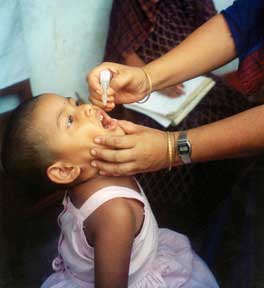contact immunity on:
[Wikipedia]
[Google]
[Amazon]
 Contact immunity is the property of some
Contact immunity is the property of some
 Contact immunity is the property of some
Contact immunity is the property of some vaccines
A vaccine is a biological preparation that provides active acquired immunity to a particular infectious or malignant disease. The safety and effectiveness of vaccines has been widely studied and verified. A vaccine typically contains an ag ...
, where a vaccinated individual can confer immunity
Immunity may refer to:
Medicine
* Immunity (medical), resistance of an organism to infection or disease
* ''Immunity'' (journal), a scientific journal published by Cell Press
Biology
* Immune system
Engineering
* Radiofrequence immunity ...
upon unimmunized individuals through contact with bodily fluids or excrement. In other words, if person "A" has been vaccinated
A vaccine is a biological Dosage form, preparation that provides active acquired immunity to a particular infectious disease, infectious or cancer, malignant disease. The safety and effectiveness of vaccines has been widely studied and verifi ...
for virus
A virus is a submicroscopic infectious agent that replicates only inside the living Cell (biology), cells of an organism. Viruses infect all life forms, from animals and plants to microorganisms, including bacteria and archaea. Viruses are ...
''X'' and person "B" has not, person "B" can receive immunity to virus ''X'' just by coming into contact with person "A". The term was coined by Romanian physician Ioan Cantacuzino.
The potential for contact immunity exists primarily in "live" or attenuated vaccine
An attenuated vaccine (or a live attenuated vaccine, LAV) is a vaccine created by reducing the virulence of a pathogen, but still keeping it viable (or "live"). Attenuation takes an infectious agent and alters it so that it becomes harmless or le ...
s. Vaccination with a live, but attenuated, virus can produce immunity to more dangerous forms of the virus. These attenuated viruses produce little or no illness in most people. However, the live virus multiplies briefly, may be shed in body fluid
Body fluids, bodily fluids, or biofluids, sometimes body liquids, are liquids within the Body (biology), body of an organism. In lean healthy adult men, the total body water is about 60% (60–67%) of the total Human body weight, body weight; it ...
s or excrement
Feces (also known as faeces American and British English spelling differences#ae and oe, or fæces; : faex) are the solid or semi-solid remains of food that was not digested in the small intestine, and has been broken down by bacteria in the ...
, and can be contracted by another person. If this contact produces immunity and carries no notable risk, it benefits an additional person, and further increases the immunity of the group.
The most prominent example of contact immunity was the oral polio vaccine (OPV). This live, attenuated polio
Poliomyelitis ( ), commonly shortened to polio, is an infectious disease caused by the poliovirus. Approximately 75% of cases are asymptomatic; mild symptoms which can occur include sore throat and fever; in a proportion of cases more severe ...
vaccine was widely used in the US between 1960 and 1990; it continues to be used in polio eradication
Polio eradication, the goal of permanent global cessation of circulation of the poliovirus and hence elimination of the poliomyelitis (polio) it causes, is the aim of a multinational public health effort begun in 1988, led by the World Healt ...
programs in developing countries because of its low cost and ease of administration. It is popular, in part, because it is capable of contact immunity. Recently immunized children "shed" live virus in their feces for a few days after immunization
Immunization, or immunisation, is the process by which an individual's immune system becomes fortified against an infectious agent (known as the antigen, immunogen). When this system is exposed to molecules that are foreign to the body, called ' ...
. About 25 percent of people coming into contact with someone immunized with OPV gained protection from polio through this form of contact immunity. Although contact immunity is an advantage of OPV, the risk of vaccine-associated paralytic poliomyelitis
Poliomyelitis ( ), commonly shortened to polio, is an infectious disease caused by the poliovirus. Approximately 75% of cases are asymptomatic; mild symptoms which can occur include sore throat and fever; in a proportion of cases more severe ...
—affecting 1 child per 2.4 million OPV doses administered—led the Centers for Disease Control and Prevention
The Centers for Disease Control and Prevention (CDC) is the National public health institutes, national public health agency of the United States. It is a Federal agencies of the United States, United States federal agency under the United S ...
(CDC) to cease recommending its use in the US as of January 1, 2010, in favor of inactivated poliovirus vaccine (IPV). The CDC continues to recommend OPV over IPV for global polio eradication activities.
The main drawback of live virus–based vaccines is that a few people who are vaccinated or exposed to those who have been vaccinated may develop severe disease. Those with defective immune function are the most vulnerable. In the case of OPV, an average of eight to nine adults contracted paralytic polio from contact with a recently immunized child each year. As the risk of catching polio in the Western Hemisphere diminished, the risk of contact infection with the attenuated polio virus outweighed the advantages of OPV, leading the CDC to recommend its discontinuation.
Contact immunity differs from herd immunity
Herd immunity (also called herd effect, community immunity, population immunity, or mass immunity) is a form of indirect protection that applies only to contagious diseases. It occurs when a sufficient percentage of a population has become i ...
, a different type of group protection, in which risk for unimmunized individuals is reduced if they are surrounded by immunized individuals who are unlikely to contract, harbor, or transmit the disease.
References
{{reflist Epidemiology Polio Vaccination